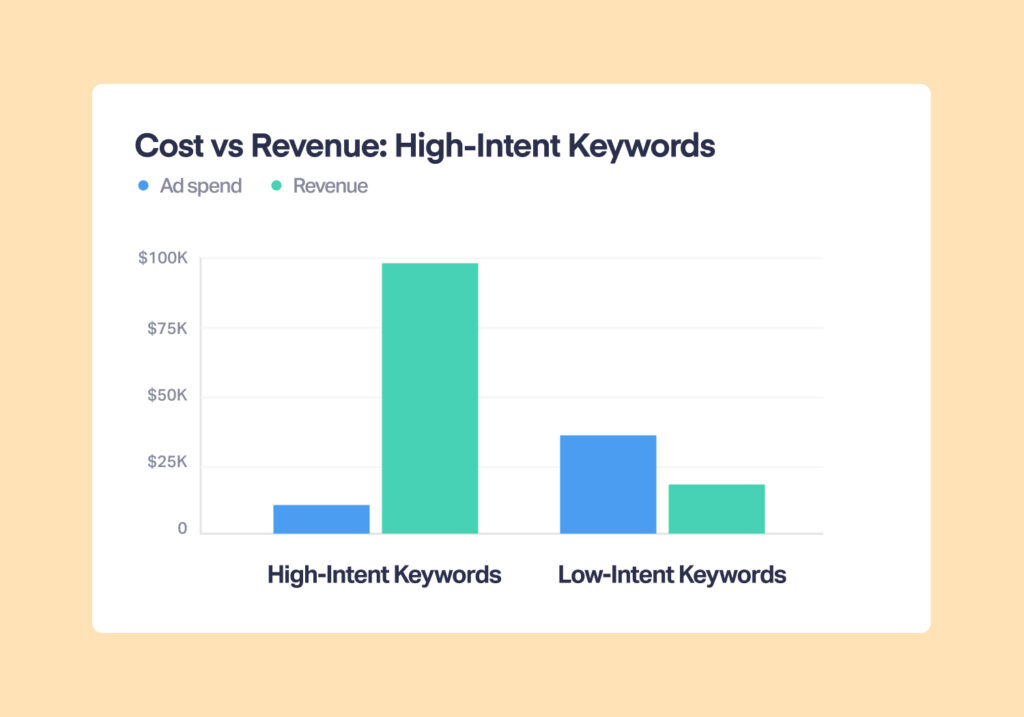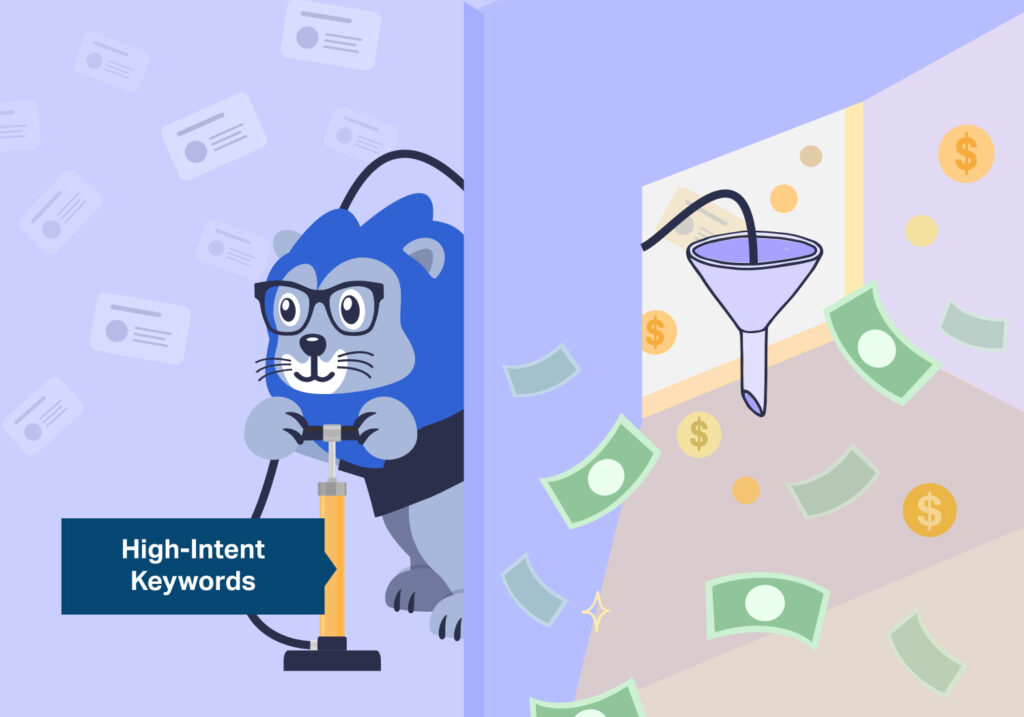
Not all keywords drive conversions—high intent keywords do. These are the keywords that prospects search for when they’re ready to take action. And these are the keywords that, once targeted, drive more valuable leads, boost ROI, and turn mediocre campaigns into runaway success stories.
This guide will show you 9 proven strategies to finding and leveraging high intent keywords using both your own data and external tools, helping you optimize for real business growth.
Why High Intent Keywords Matter
The end goal of most marketing initiatives is to generate leads or drive sales. Yet, many SEO strategies prioritize sheer traffic volume without considering whether those visitors are ready to convert. Similarly, many PPC campaigns target low-converting keywords, which may bring in plenty of clicks but few purchases or trial signups.
Ultimately, high intent keywords matter because they are a stronger signal of buyer readiness.
High intent keywords:
- Target people closer to the bottom of the funnel who have done their research and are ready to make a purchase.
- Generate higher conversion rates because these searchers are actively seeking a solution.
- Require fewer resources to convert since they already have higher motivation to make a purchase or request more information.
In short, traffic and clicks don’t pay the bills—conversions do. That’s why optimizing for high intent keywords can have a direct, measurable impact on your revenue.
Understanding Low Intent vs. High Intent Keywords
Low-Intent Keywords
Low-intent keywords are generally broader or exploratory in nature. Users typing these queries might be researching what a product or service does, looking for definitions or basic info on a topic, or exploring whether a service is relevant to their needs.
People looking for these terms are typically early in the buyer’s journey, so while they’re valuable for brand awareness and nurturing, they often require more time and marketing resources before converting.
High Intent Keywords
High intent keywords signal strong readiness to take an action like purchasing a product, scheduling a service, or requesting a quote or demo.
Because these searchers are further along the funnel, they represent your best chance to capture leads and revenue quickly. Optimizing your marketing around these terms helps you minimize costs and reach prospects who are actively looking to make a decision.
Search Intent & Low/High Intent Keywords
To better understand how to find high intent keywords, it’s helpful to have a basic understanding of search intent. While “low” and “high intent” often refer to a prospect’s readiness to convert, search intent is a way to describe why someone is searching for a keyword in the first place.
Here is a table breaking down the four types of search intent.
Note: We will use Search Intent later to single out your most valuable keywords, so take a minute to really understand this table.
| Search Intent | Definition | Keyword Examples (Saas, ecommerce, local services) | Low vs High Intent Keywords |
| Informational Intent | Users are looking for answers, explanations, or general knowledge | - What is CRM software? - How to choose the right running shoes? - How often should I get an HVAC tune-up | Low Intent Keywords |
| Navigational Intent | Users are searching for a specific website, brand, or product | - HubSpot login page - Adidas official site - HVAC King products warranty | Moderate Intent Keywords |
| Commercial Investigation Intent | Users are researching options before making a purchase | - Best CRM for small business - Nike vs. Adidas running shoes - Best HVAC companies near me | High Intent Keywords |
| Transactional Intent | Users are ready to take an action, like purchasing | - Buy HubSpot CRM - Buy Nike Air Force 1 online - Book HVAC inspection | Highest Intent Keywords |
Recommendation: Target Commercial Investigation and Transactional Intent keywords.
Two Ways of Identifying Valuable Keywords for Your Business
Now that we have a better understanding of what high intent keywords are, let’s talk about how to find them so you can incorporate them into your strategy.
There are two ways to find high intent keywords:
- Use your own data
- Use third-party data
Note: We’ll go through methods for both. However, we recommend starting with your own data. Doing so lets you isolate keywords that actually led to sales, use the language of verified leads/customers, and often don’t require signing up for multiple third-party tools.
How to Find High Intent Keywords in Your Own Data
1. Mine Paid Search Data
Use WhatConverts to see which keywords brought in leads that actually convert (phone call or form, schedule appointment, purchase, etc.). Here’s how to do it.
- Run a Leads by Keyword report.
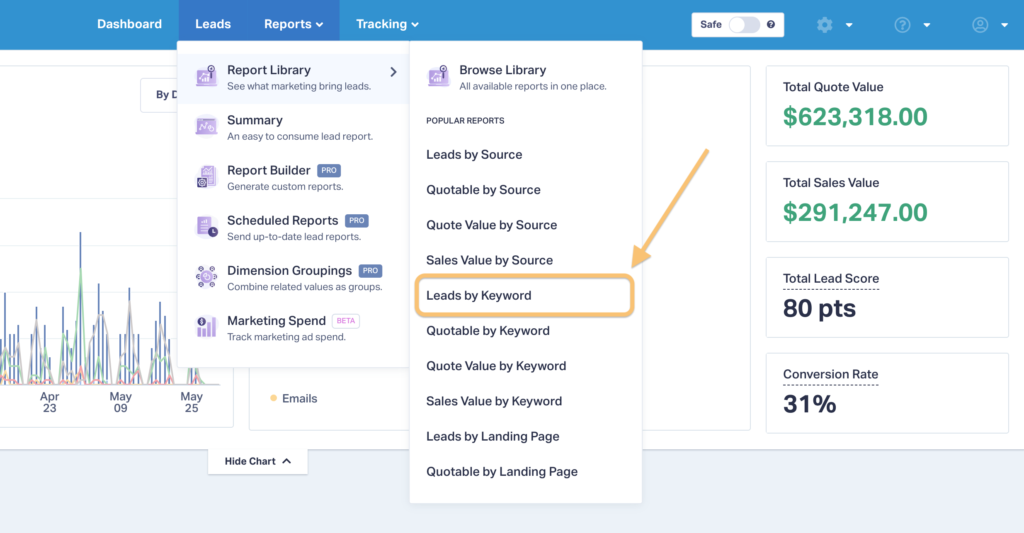
- Now you can see a full breakdown of how many leads each keyword brought in and which channels they came from (Source and Medium).
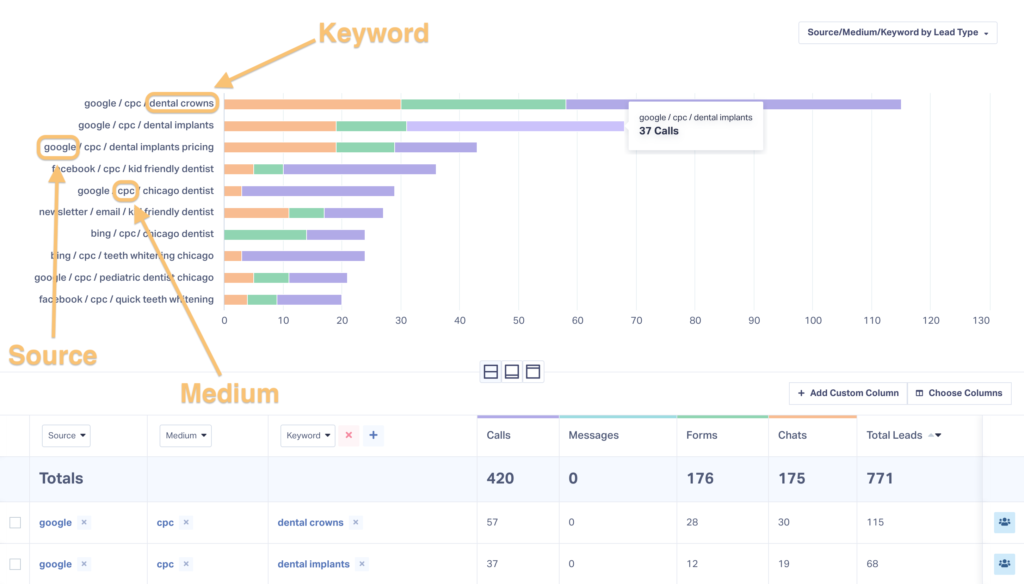
- If you want to see keywords by value earned, just switch to Quote or Sales Value.
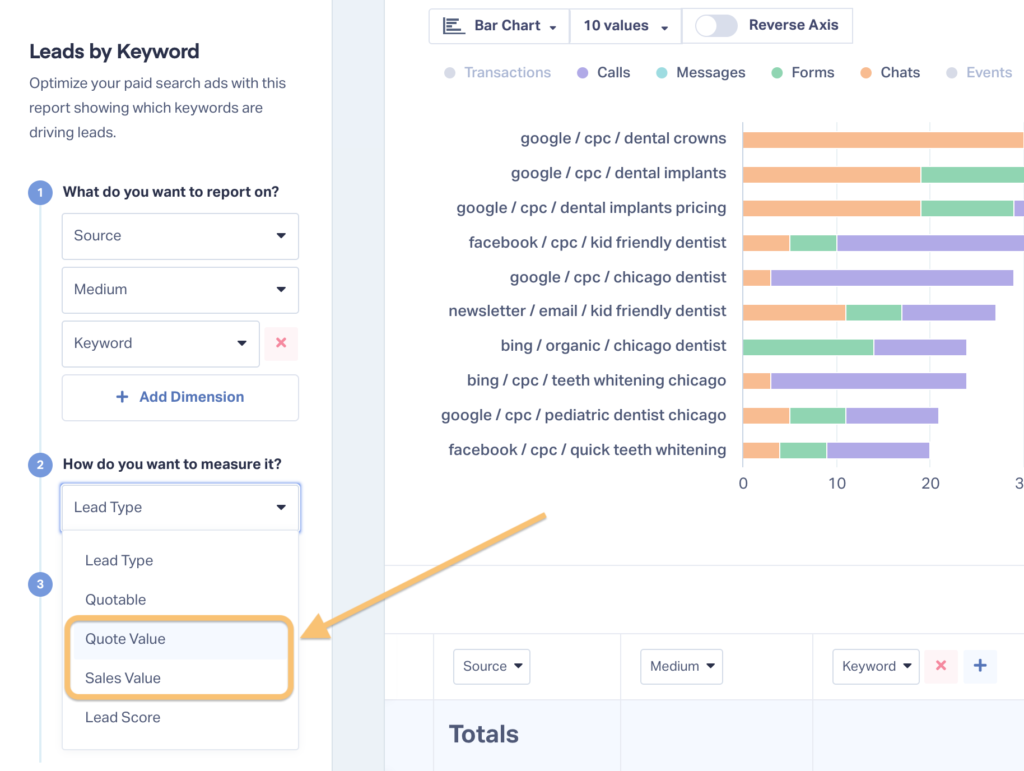
- Now you can see that same keyword breakdown by revenue, not lead count.
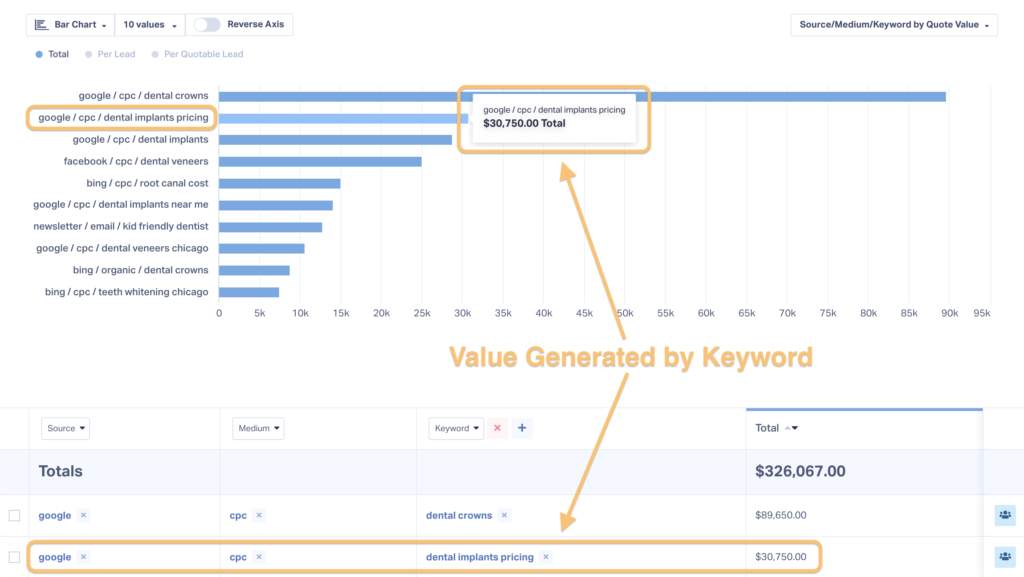
With this data, you can clearly see which of your keywords are the most effective at driving real, quantitative value for your clients.
Resource: 9 Best Marketing Reporting Software for Agencies in 2025
2. Mine Paid Search Data (Google Ads)
Use built-in tools on your ad platform of choice to find high intent keywords. For example, you can use Google Ads to mine for keywords by:
- Go to Campaigns → Insights and reports → Search terms.
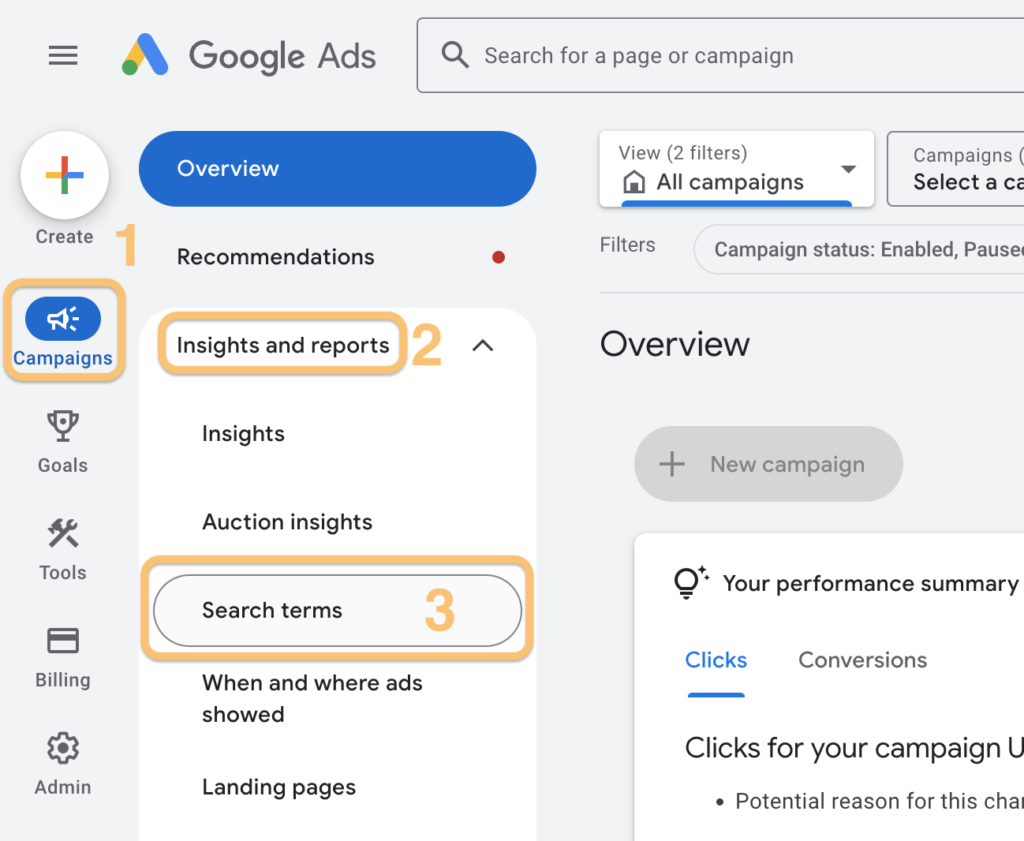
- Look at the search terms that converted the best. You can sort terms by conversion count or conversion rate. Remember, it’s easy to have a deceptively high conversion rate if your conversion count is low, so always consider both metrics.
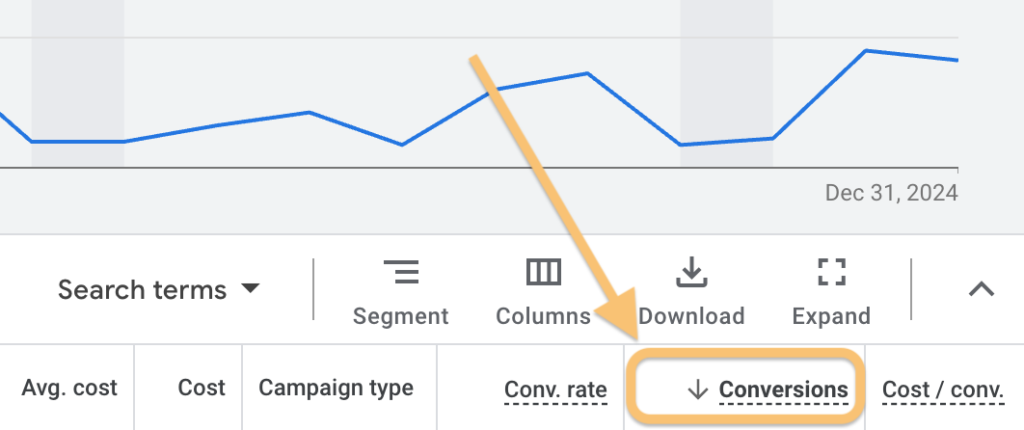
Warning: Be sure you’re tracking meaningful conversions for these keywords, not just clicks, impressions, etc. Some keywords may bring in tons of clicks but few purchases, meaning they have little value. You can set up conversion tracking using Google Tag Manager or lead tracking tools.
3. Work Backwards from High-Converting Pages
You can use Google Search Console to find queries that led to your highest converting pages. Though you can’t see exactly which terms led to those conversions (Google made tying keywords to individual organic leads practically impossible more than a decade ago), you can get a sense for which keywords are driving the most traffic to these pages.
Here’s how to do it. First, find your highest converting pages.
You can do this through GA4: Reports → Engagement → Landing page → Sort by Session key event rate (remember to consider conversion count!) 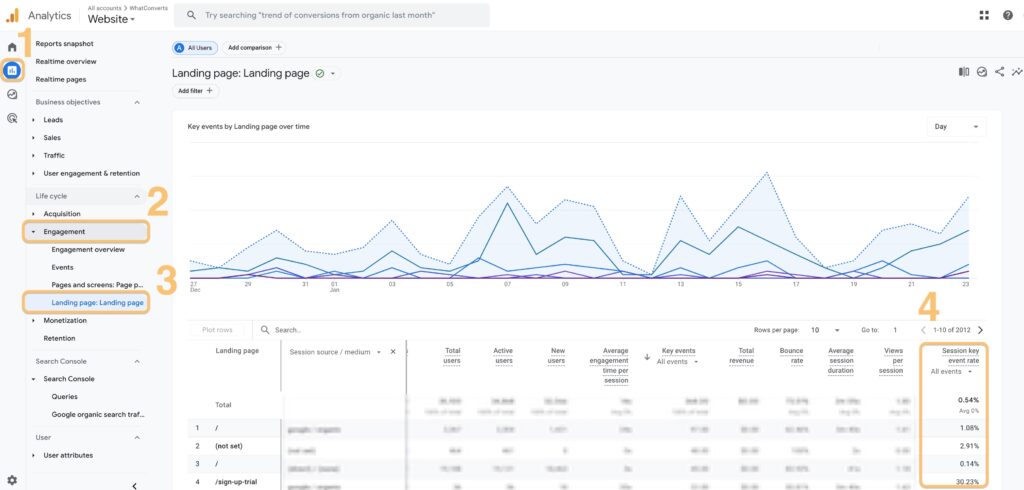
Or by running a Leads or Quote/Sales Value by Landing Page report in WhatConverts. 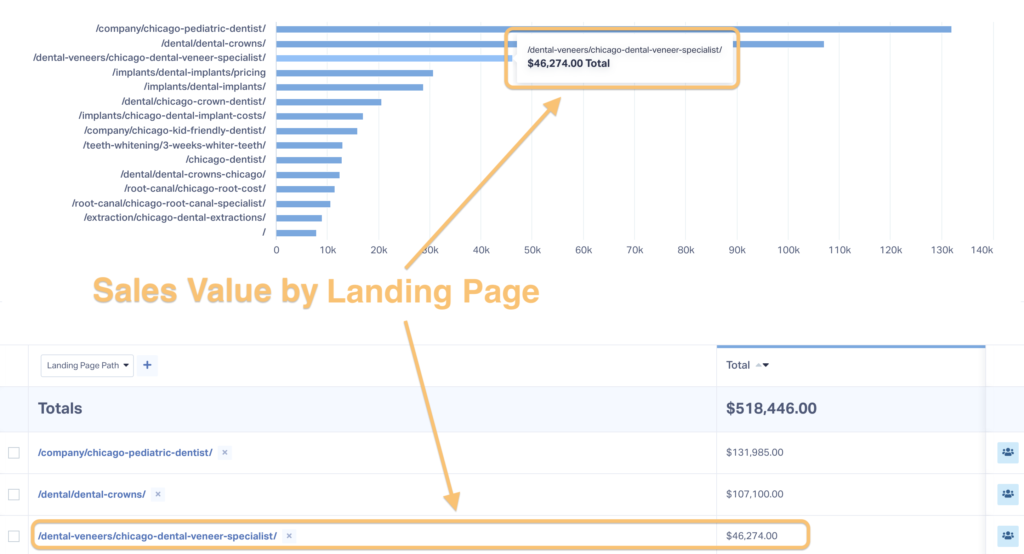
Next, head to Search Console and look at the queries for those pages.
- Go to Performance → Search results.
- Filter results to only show one of your high-converting pages.
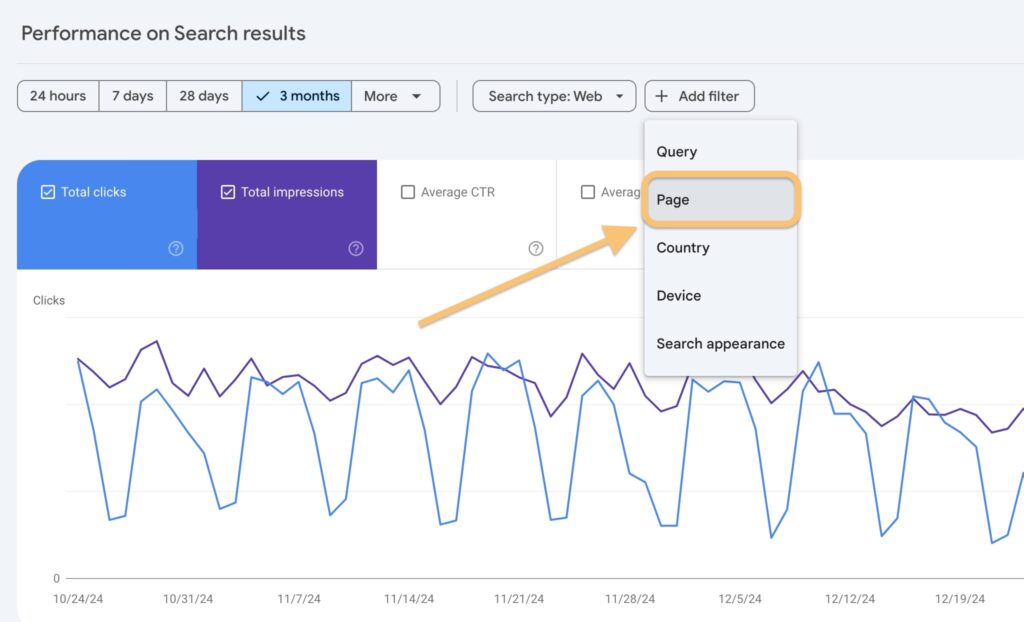
- Scroll down to see the top queries people searched to reach that page.
- Repeat for your other high-converting pages.
What’s great about this method is it uncovers keywords you may not already be targeting with PPC.
4. Use Voice of Customer Data
Finally, you can uncover a gold mine of high intent keyword opportunities by following the age-old marketing adage: listen to your customers. Call recordings, form field values, emails, chats—in all of these is a wealth of keywords that your customers are actually using. And if you can tap into them, you can uncover some valuable keywords worth targeting.
Tapping into voice of customer data is simple with lead tracking tools like WhatConverts:
- Log in to the Lead Manager.
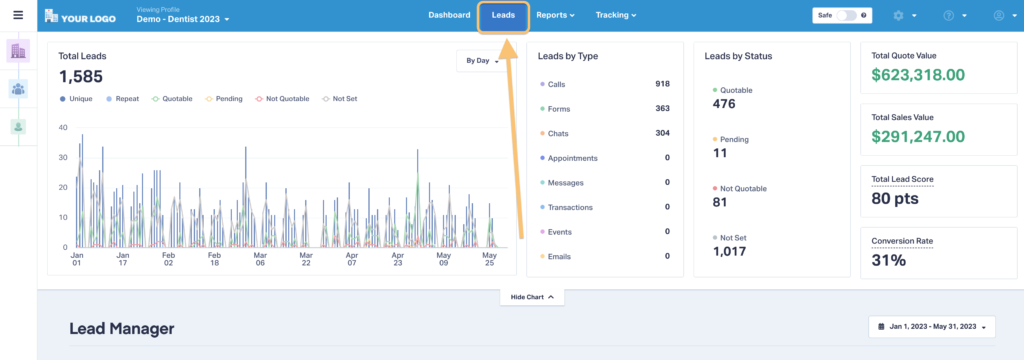
- Sort your leads by most valuable. For example, you can filter your view to only see leads worth a sales value between $1,000 and $5,000. The click View Lead to see their conversion data.
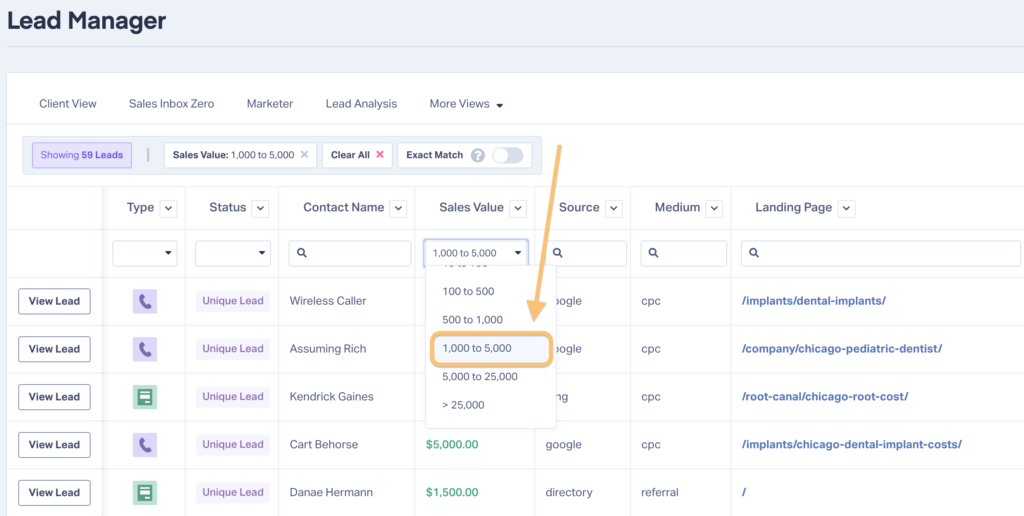
- This is the Lead Details sceen. Here you can listen to call recordings, read transcriptions, view form data, and more. There’s even a “Spotted Keywords”.
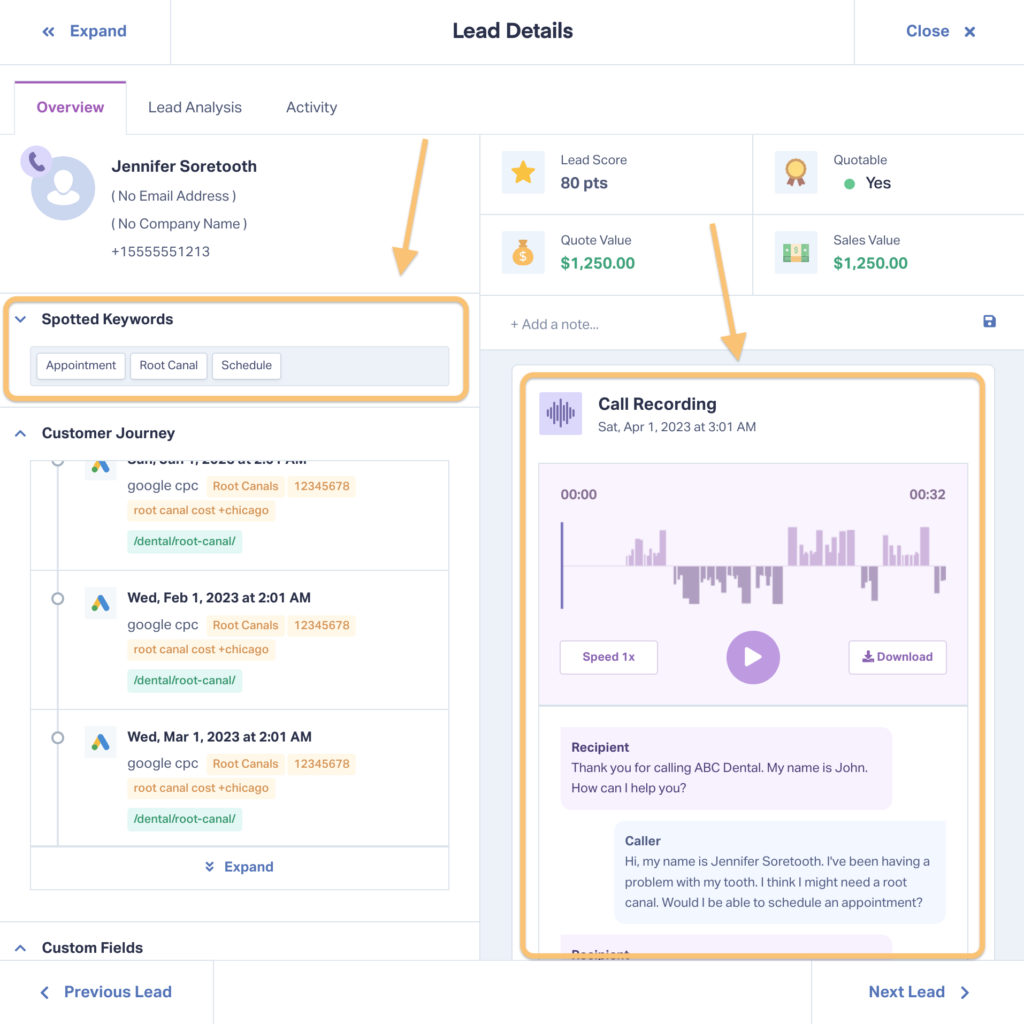
- You can also switch over to the Lead Analysis tab to view an AI generated summary and keywords picked up from the conversation.
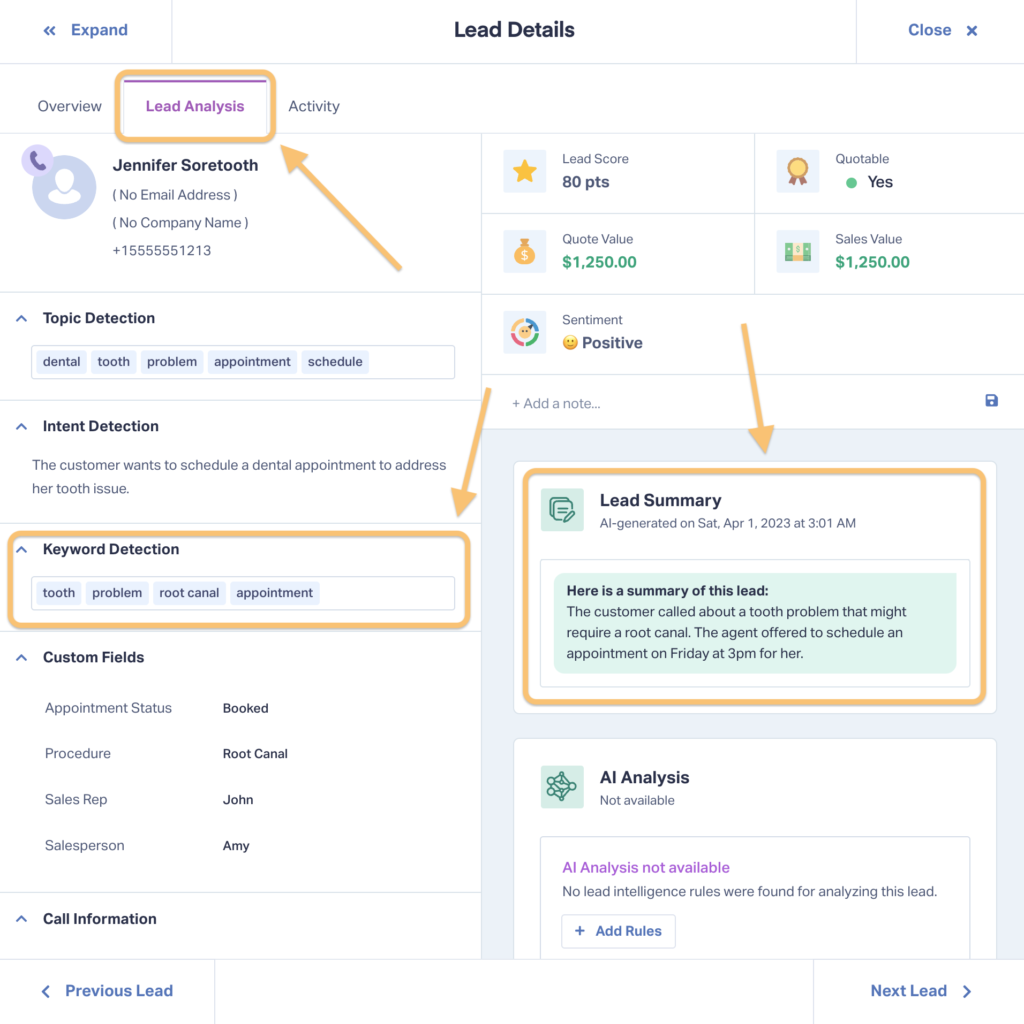
Use this comprehensive lead data—especially the Keyword Detector section—to see the exact language your customers are using to refer to your services.
How to Find High Intent Keywords in Third-Party Data
Once you’ve exhausted your high intent keyword opportunities from your own data, you can start using third-party data to mine for more. Here are the top five ways to find these keyword types using tools’ data.
5. Use a Competitor Analysis Tool (Paid)
There are lots of paid options out there to help you find competitor keywords (a great source for high intent keywords). Some of the most popular are:
- Ahrefs (great for organic, we use this!)
- SEMrush (best for full PPC competitive analysis)
- Moz Keyword Explorer (beginner-friendly)
- SpyFu (Google Ads competitor focused)
- iSpionage (Google Ads keyword tracking)
6. Use Google Search Auto-Suggestions (Free)
Google’s auto-suggestions reveal real-time high intent queries.
- Start typing a relevant keyword in Google (e.g., best CRM for).
- Look at suggestions—Google predicts common searches.
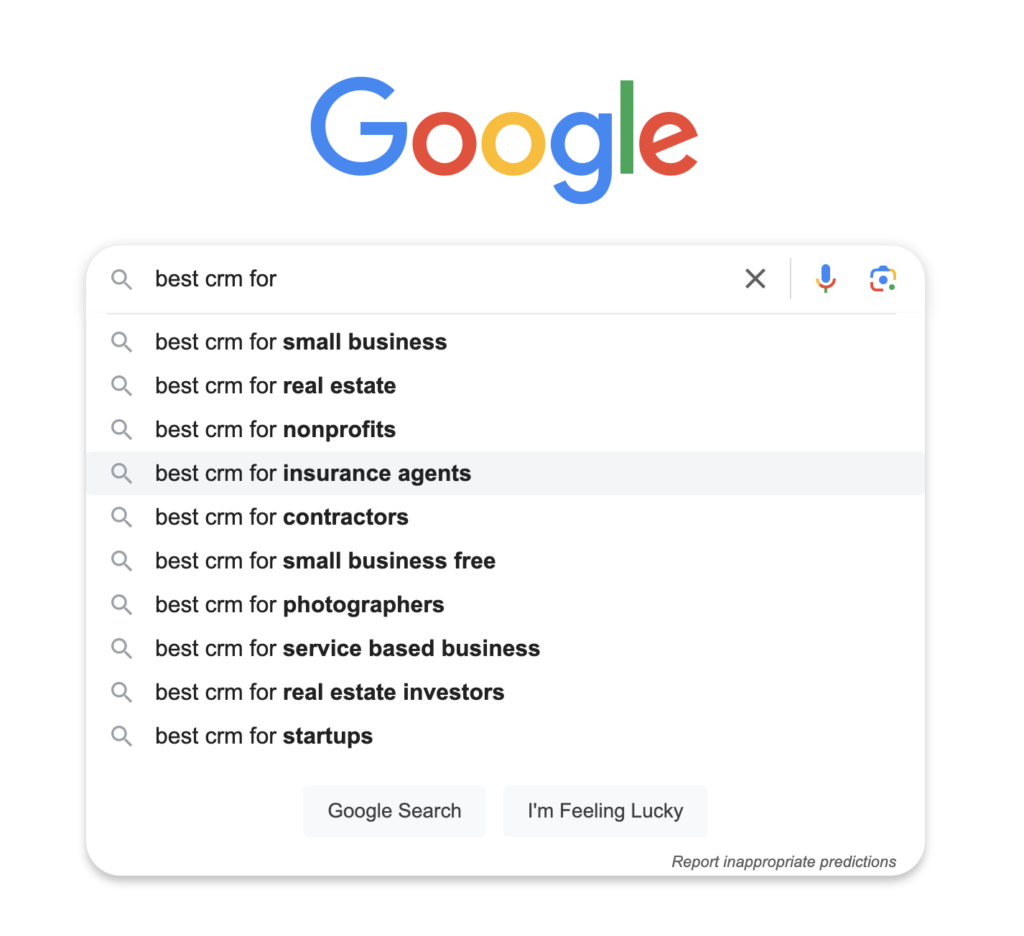
- Identify high intent modifiers like buy, pricing, near me, vs. (Commercial Investigation and Transactional Search Intent)
- Check People also ask and Related searches for more ideas.
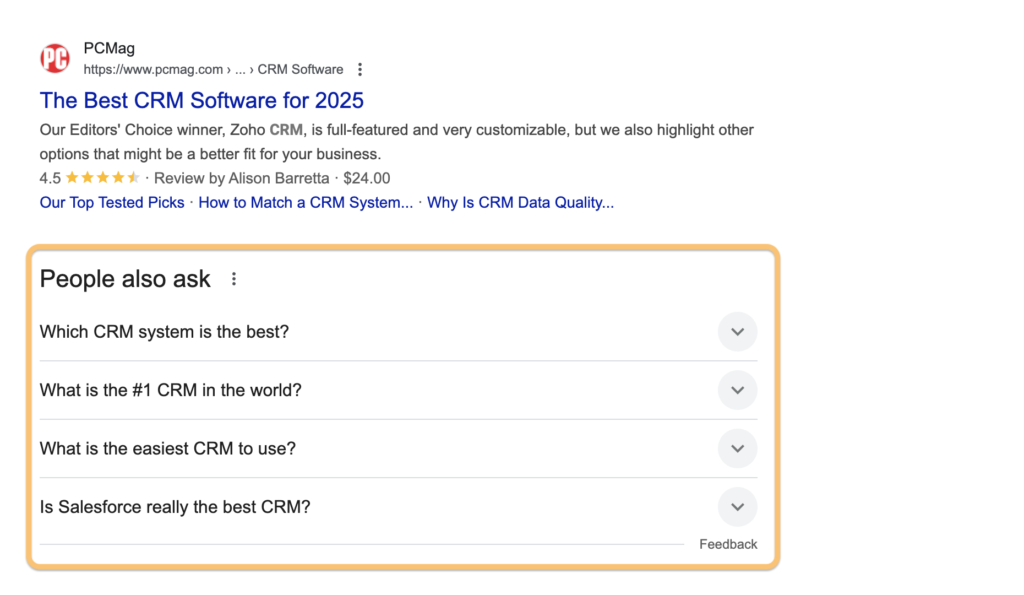
7. Analyze Competitor Google Ads (Free)
Competitors bid on high intent keywords. Their paid ads often reveal which terms convert best.
- Search for a core keyword (e.g., best lead tracking software).
- Look at the top paid results—these ads target high-converting terms.
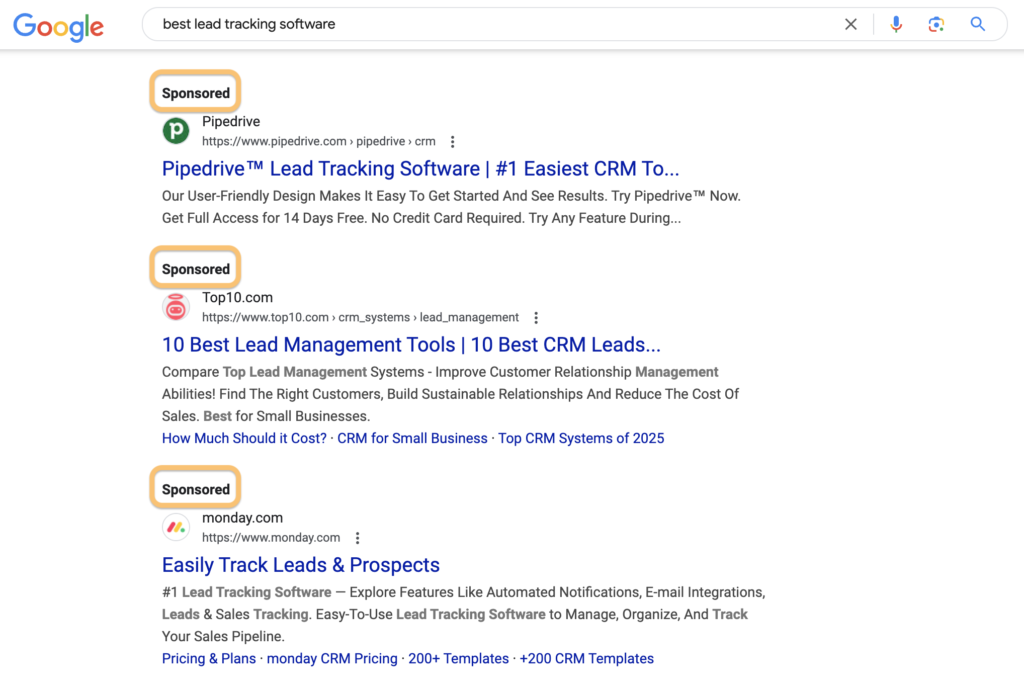
- Analyze ad copy for transactional language like free trial or get started.
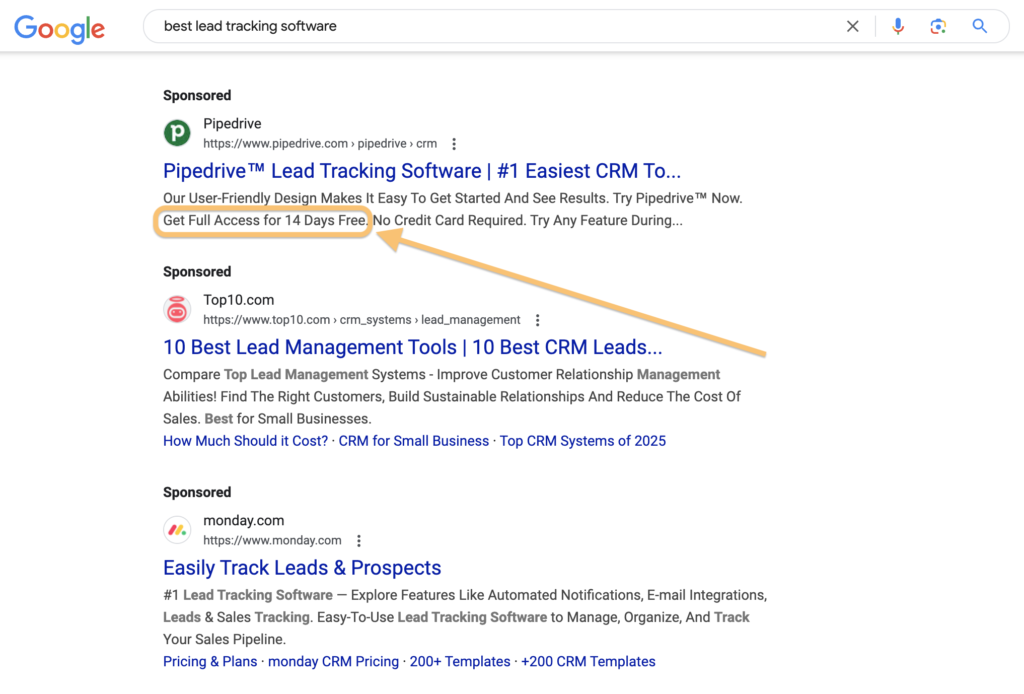
- Click ads and check landing pages for additional keyword insights.
8. Explore Industry-Specific Forums & Reddit (Free)
Forums reveal real user questions—many of which show buying intent.
- Search forums like Reddit using Google (e.g., site:reddit.com best CRM).
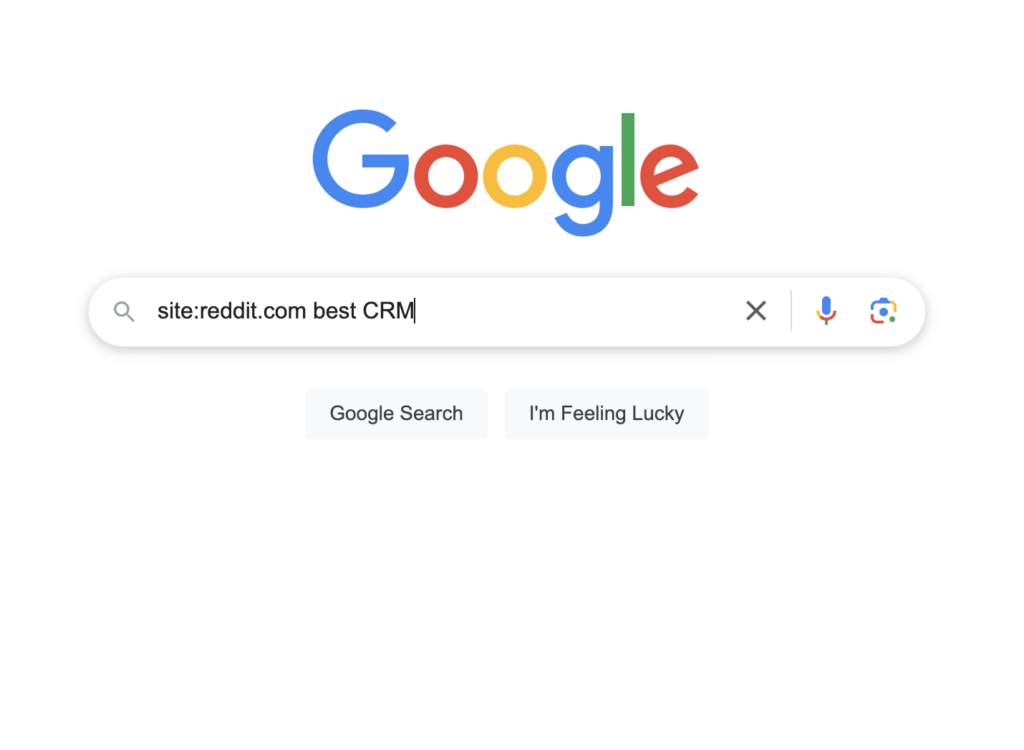
- Identify repeated questions that indicate strong interest.
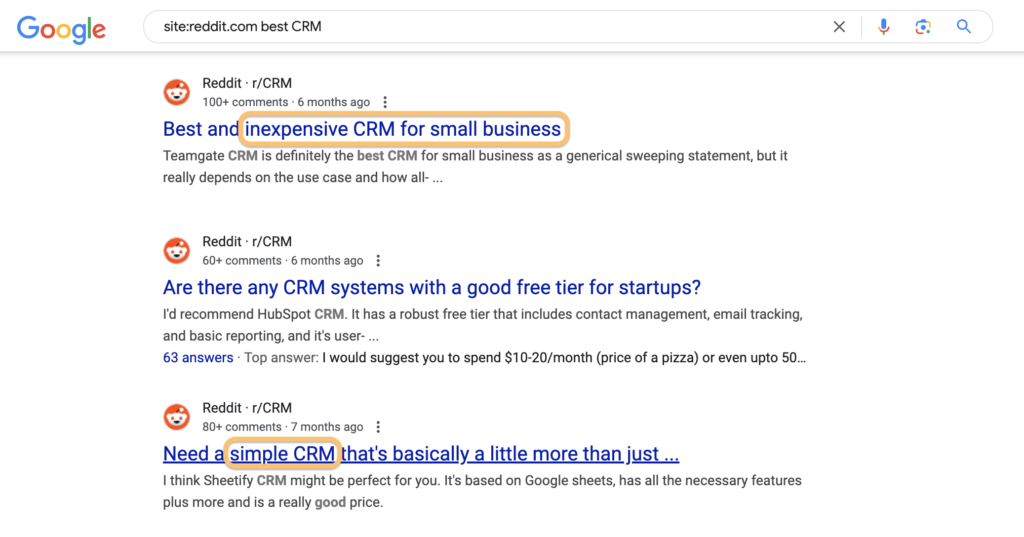
- Look for commercial phrases like best software for or CRM recommendations. (Commercial Investigation and Transactional Search Intent)
- Analyze replies for additional keyword insights.
- Extract common high intent phrases and verify search volume (e.g., "best simple CRM").
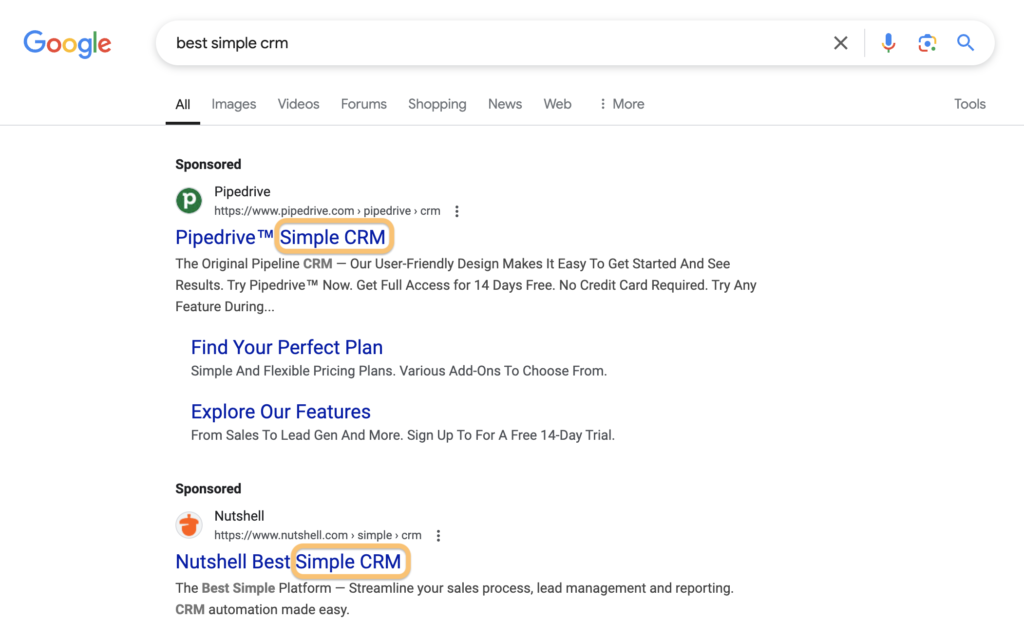
- Search these terms in Google to check if they trigger paid ads.
9. Use Google’s “Allintitle” Operator for Competitive Analysis (Free)
This method finds high intent keywords competitors use in their content.
- Search Google using allintitle:“best CRM software”.
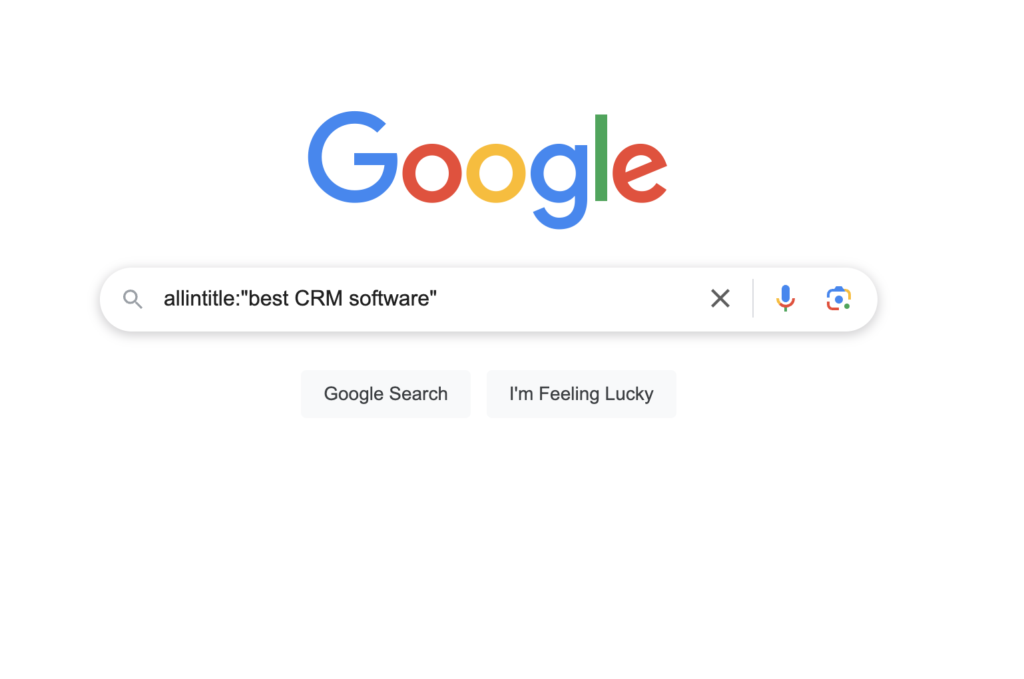
- Check the number of search results—fewer results mean lower competition (click "Tools").
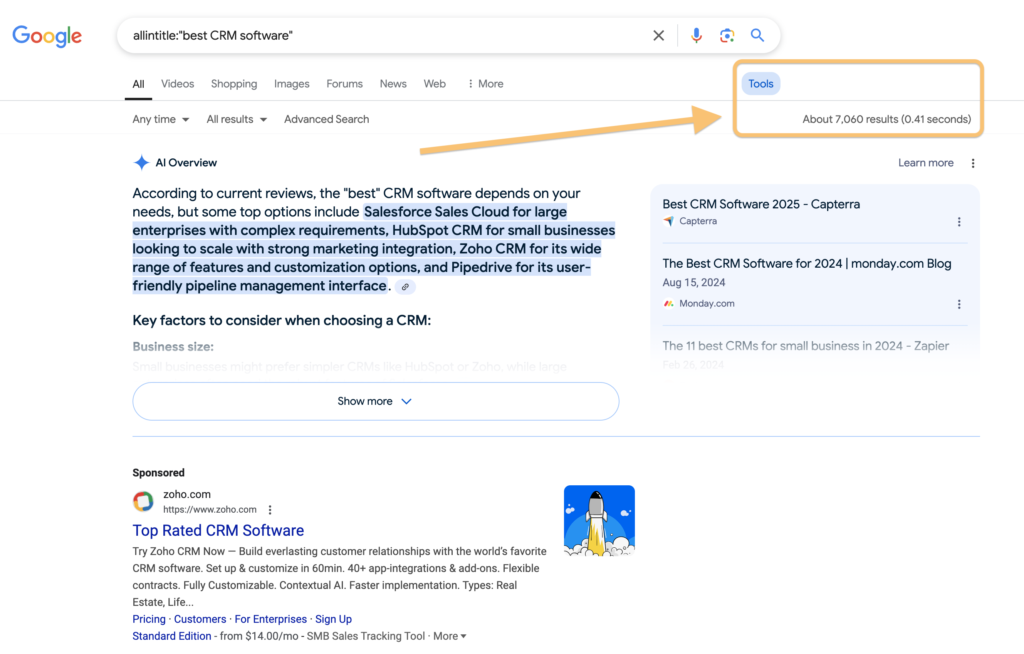
- Experiment with variations like best CRM for contractors.
- Find keywords with low competition but ads in search results.
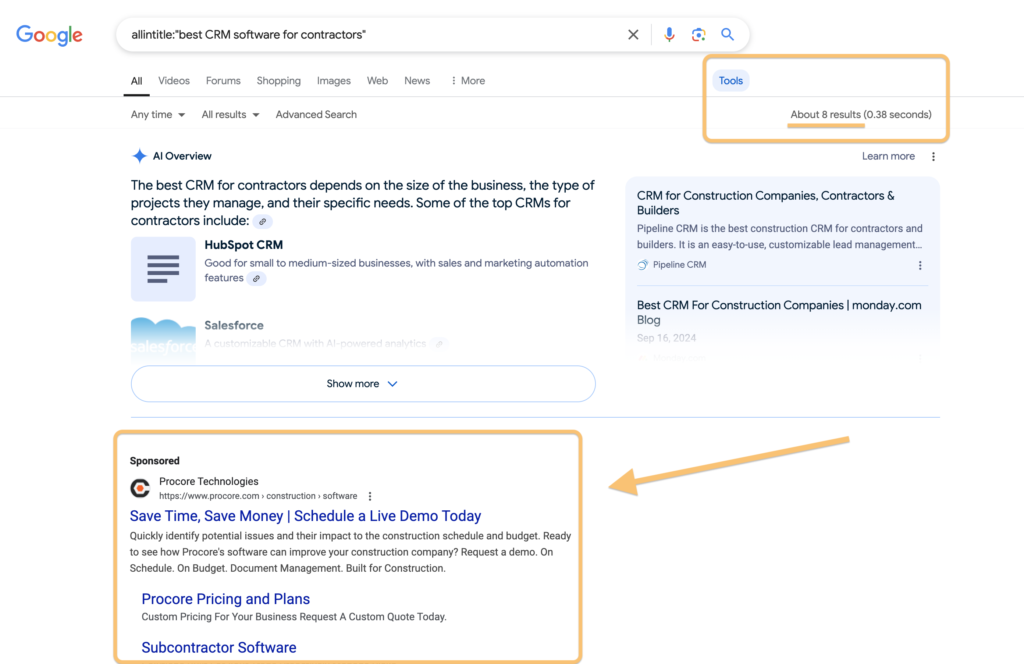
- Look for content gaps—if few sites target a high intent keyword, it’s a strong opportunity.
Wrapping Up
Prioritizing high intent keywords maximizes conversions and revenue by focusing on searchers ready to act. Start with your own data—paid search reports, landing pages, and customer insights—then expand using Google search features and competitor analysis.
By optimizing for high intent terms, you reduce wasted spend and attract qualified leads.
Ready to uncover your high intent keywords and better optimize your marketing?
Start your free 14-day trial of WhatConverts today or book a demo with a product expert to see how we help prove and grow your ROI.
Get a FREE presentation of WhatConverts
One of our marketing experts will give you a full presentation of how WhatConverts can help you grow your business.
Schedule a Demo
Grow your business with WhatConverts






